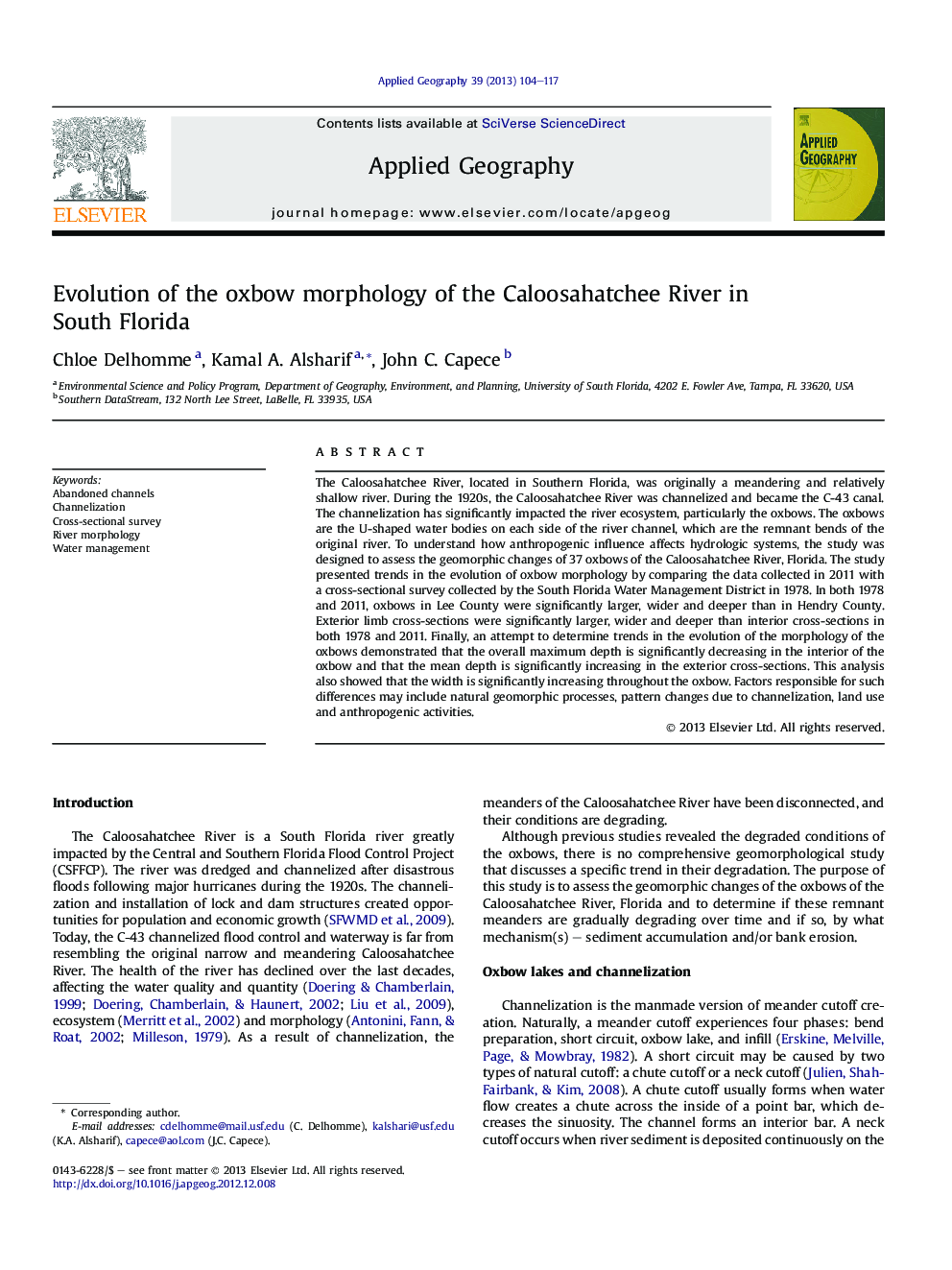| Article ID | Journal | Published Year | Pages | File Type |
|---|---|---|---|---|
| 83721 | Applied Geography | 2013 | 14 Pages |
The Caloosahatchee River, located in Southern Florida, was originally a meandering and relatively shallow river. During the 1920s, the Caloosahatchee River was channelized and became the C-43 canal. The channelization has significantly impacted the river ecosystem, particularly the oxbows. The oxbows are the U-shaped water bodies on each side of the river channel, which are the remnant bends of the original river. To understand how anthropogenic influence affects hydrologic systems, the study was designed to assess the geomorphic changes of 37 oxbows of the Caloosahatchee River, Florida. The study presented trends in the evolution of oxbow morphology by comparing the data collected in 2011 with a cross-sectional survey collected by the South Florida Water Management District in 1978. In both 1978 and 2011, oxbows in Lee County were significantly larger, wider and deeper than in Hendry County. Exterior limb cross-sections were significantly larger, wider and deeper than interior cross-sections in both 1978 and 2011. Finally, an attempt to determine trends in the evolution of the morphology of the oxbows demonstrated that the overall maximum depth is significantly decreasing in the interior of the oxbow and that the mean depth is significantly increasing in the exterior cross-sections. This analysis also showed that the width is significantly increasing throughout the oxbow. Factors responsible for such differences may include natural geomorphic processes, pattern changes due to channelization, land use and anthropogenic activities.
► This study assessed the geomorphic changes of 37 oxbows of the Caloosahatchee River. ► The width of the oxbows is significantly increasing. ► The overall maximum depth is significantly decreasing but only in the interior of the oxbow. ► The mean depth is significantly increasing but only in the exterior cross-sections.
